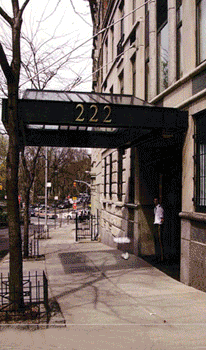Tuesday,
Russian bombers train to strike U.S.
By Bill Gertz
Russia's strategic bomber forces recently carried out simulated nuclear bombing raids against the United States in exercises that included test firings of long-range cruise missiles, The Washington Times has learned.
According to a Defense Intelligence Agency (DIA) assessment of the exercises, the bomber activity "demonstrated that the heavy bomber force is still an important factor in Russia's strategic planning, despite a number of problems," said Pentagon officials familiar with the assessment.
"The April exercises indicate that the primary mission of the heavy bomber force remains strikes on North America," the DIA stated.
A defense official familiar with the report said Russia's continued targeting of the United States raises questions about Moscow's view of the United States. "Why aren't they practicing against Chinese targets?" this official said.
A second official said the strategic bomber exercise aimed at the United States was not unusual. He said U.S. strategic bombers also practice raids against Russian targets.
Most of Russia's strategic bombers took part in the Long-Range Aviation exercises, which were held April 20-27 in Central Asia as part of a nationwide spring military training cycle. Small units of bomber groups conducted the simulated raids.
The large-scale exercise involved most of the Russian Air Force's long-range bombers, including Tu-95 Bear and Tu- 160 Blackjack bombers, which both carry long-range nuclear cruise missiles.
The maneuvers were the first major training exercises this year by the Long-Range Aviation forces, which are in the process of being consolidated with Russia's air defense forces.
Like other parts of the Russian military, the bomber forces have been hit hard by budget shortfalls, and training has fallen so sharply that their reliability is in question, the officials said.
The DIA believes Russian bomber forces are trying to catch up on lost training due to fuel and spare parts shortages, or may be trying to reinvigorate heavy bomber training.
The CIA disagreed with that evaluation and stated as part of the DIA assessment that Russian strategic bomber pilots are receiving only 30 flight hours a year, compared with 18 hours per month for U.S. strategic bomber pilots.
According to the officials, the CIA gauges Russia's capability to conduct long-range bombing missions to be "marginal" because of the lack of training.
A Pentagon spokesman had no immediate comment.
In addition to the continued threat from Russia's bombers, a recent CIA report said China is aiming 13 of its 18 long-range strategic missiles with nuclear warheads at U.S. cities.
Russia's Long-Range Aviation headquarters is located near Moscow, and bomber units are based at Mozdok, Ryazan and Soltsy. Russia also maintains strategic bomber bases in Ukraine and Belarus.
The bombers flew simulated raids into northern polar regions -the flight path used for attacking the United States, the officials said.
The cruise missile launches involved bomber sorties against a test range in Kazakhstan, where Russia has a firing range, and the launching of AS-15 cruise missiles. The bombers carried out aerial refueling for both the inbound and return flights, the officials said.
Thomas Moore, a defense analyst with the Heritage Foundation, said the targeting of the United States and the cruise missile test are a cause for concern. "The underlying cause for concern is that the Russian military still regards us as a potential enemy," Mr. Moore said in an interview.
The simulated bomber attacks against the United States were not the first time Russian nuclear units targeted U.S. or allied forces.










